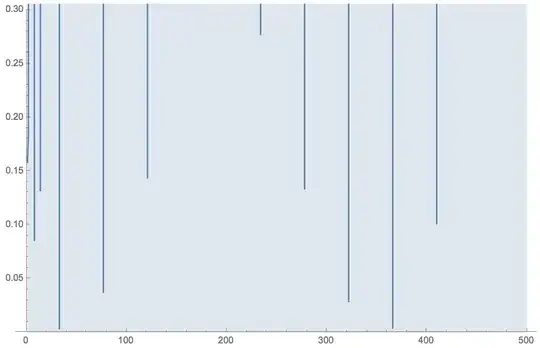$\frac{\pi}{2}$ is irrational, hence has an infinite simple continued fraction expansion. Denoting the convergents by $\frac{p_k}{q_k}$, the relation $p_{k-1}q_k - p_kq_{k-1} = (-1)^k$ - holding for all simple continued fractions - shows that the denominators of successive convergents are coprime, in particular there are infinitely many convergents of $\frac{\pi}{2}$ with an odd denominator. Further, for all convergents we have
$$\biggl\lvert \frac{\pi}{2} - \frac{p_k}{q_k}\biggr\rvert < \frac{1}{q_k q_{k+1}} \leqslant \frac{1}{{q_k}^2}.$$
If $\frac{p}{q}$ is a convergent of $\frac{\pi}{2}$ with a denominator $\equiv 3 \pmod{4}$, then with $a = 3p,\, b = 3q$ we obtain a (non-reduced) fraction with denominator $\equiv 1 \pmod{4}$ satisfying
$$\biggl\lvert \frac{\pi}{2} - \frac{a}{b}\biggr\rvert < \frac{9}{b^2}.$$
Thus, regardless of whether infinitely many convergents of $\frac{\pi}{2}$ have denominator $\equiv 1 \pmod{4}$ or not, there are infinitely many pairs $(n,m)$ of positive integers with
$$\biggl\lvert \frac{\pi}{2} - \frac{n}{4m+1}\biggr\rvert < \frac{9}{(4m+1)^2},\quad \text{or}\quad \biggl\lvert (4m+1)\frac{\pi}{2} - n\biggr\rvert < \frac{9}{4m+1}.\tag{1}$$
For $m \geqslant 1$, $(1)$ implies $n < 2\cdot(4m+1)$, and thus
$$\biggl\lvert (4m+1)\frac{\pi}{2} - n\biggr\rvert < \frac{18}{n}.\tag{2}$$
Writing $\xi_m := (4m+1)\frac{\pi}{2}$, the identity
$$1 - \sin x = 1 - \cos \bigl(\xi_m-x\bigr) = 2\sin^2\bigl(\tfrac{1}{2}(\xi_m - x)\bigr)$$
shows that for $(n,m)$ satisfying $(2)$ we have
$$1 - \sin n \leqslant \frac{162}{n^2}$$
and consequently
$$\limsup_{n \to \infty} n(\sin n - 1) = 0,$$
showing that the series is divergent, as expected.
 Can someone point me in the right direction ?
Can someone point me in the right direction ?